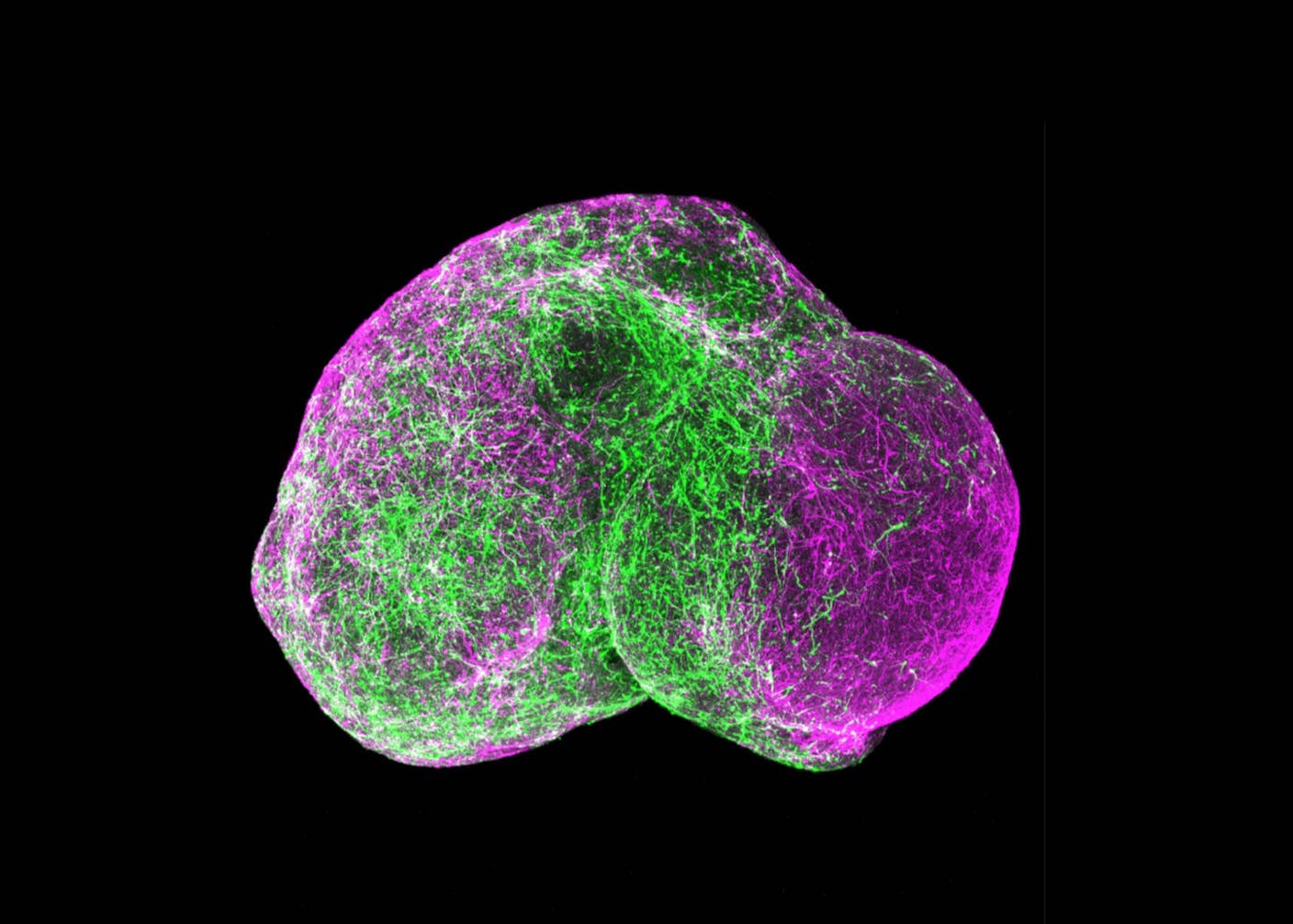DNA Computing Evolves: New System Stores Data, Plays Chess, and Solves Sudoku Puzzles

Share
DNA is nature’s computing device.
Unlike data centers, DNA is incredibly compact. These molecules package an entire organism’s genetic blueprint into tiny but sophisticated structures inside each cell. Kept cold—say, inside a freezer or in the Siberian tundra—DNA and the data encoded within can last millennia.
But DNA is hardly just a storage device. Myriad molecules turn genes on and off—a bit like selectively running bits of code—to orchestrate everyday cellular functions. The body “reads” bits of the genetic code in a particular cell at a specific time and, together, compiles the data into a smoothly operating, healthy life.
Scientists have long eyed DNA as a computing device to complement everyday laptops. With the world’s data increasing at an exponential rate, silicon chips are struggling to meet the demands of data storage and computation. The rise of large language models and other modes of artificial intelligence is further pushing the need for alternative solutions.
But the problem with DNA storage is it often gets destroyed after “reading” the data within.
Last month, a team from North Carolina State University and Johns Hopkins University found a workaround. They embedded DNA molecules, encoding multiple images, into a branched gel-like structure resembling a brain cell.
Dubbed “dendricolloids,” the structures stored DNA files far better than those freeze-dried alone. DNA within dendricolloids can be repeatedly dried and rehydrated over roughly 170 times without damaging stored data. According to one estimate, each DNA strand could last over two million years at normal freezer temperatures.
Unlike previous DNA computers, the data can be erased and replaced like memory on classical computers to solve multiple problems—including a simple chess game and sudoku.
Until now, DNA was mainly viewed as a long-term storage device or single-use computer. Developing DNA technology that can store, read, “rewrite, reload, or compute specific data files” repeatedly seemed difficult or impossible, said study author Albert Keung in a press release.
However, “we’ve demonstrated that these DNA-based technologies are viable, because we’ve made one,” he said.
A Grain of Sand
This is hardly the first attempt to hijack the code of life to increase storage and computation.
The first steps taken were in data storage. Our computers run on binary bits of information encoded in zeros and ones. DNA, in contrast, uses four different molecules typically represented by the letters A, T, C, and G. This means that different pairs of zeros and ones—00, 01, 10, 11—can be encoded into different DNA letters. Because of the way it’s packaged in cells, DNA can theoretically store far more data in less space than digital devices.
“You could put a thousand laptops’ worth of data into DNA-based storage that’s the same size as a pencil eraser,” said Keung.
With any computer, we need to be able to search and retrieve information. Our cells have evolved mechanisms that read specific parts of a DNA strand on demand—a sort of random access memory that extracts a particular piece of data. Previous studies have tapped into these systems to store and retrieve books, images, and GIFs inside DNA files. Scientists have also used microscopic glass beads with DNA “labels” as a kind of filing system for easy extraction.
But storing and extracting data is only half of the story. A computer needs to, well, compute.
Last year, a team developed a programmable DNA computer that can run billions of different circuits with minimal energy. Traditionally, these molecular machines work by allowing different strands to grab onto each other depending on calculation needs. Different pairs could signal “and,” “or,” and “not” logic gates—recapitulating the heart of today’s digital computers.
But reading and computing often destroys the original DNA data, making most DNA-based systems single-use. Scientists have also developed another type of DNA computer, which monitors changes in the molecule’s structures. These can be rewritten. Similar to standard hard drives, they can encode multiple rounds of data, but they’re also harder to scale.
DNA Meets Data
The new study combined the best of both worlds. The team engineered a DNA computer that can store information, perform computations, and reset the system for another round.
Be Part of the Future
Sign up to receive top stories about groundbreaking technologies and visionary thinkers from SingularityHub.


The core of the system relies on a central dogma in biology. DNA sits in a small cage within cells. When genes are turned on, their data is translated into RNA, which converts the genetic blueprint into proteins. If DNA is safely stored, adding protein “switches” that turn genes up or down changes the genetic readout in RNA but keeps the original genetic sequences intact.
Because the original data doesn’t change, it’s possible to run multiple rounds of RNA-based calculations from a single DNA-encoded dataset—with improvements.
Based on these ideas, the team engineered a jelly-like structure with branches similar to a brain cell. Dubbed “dendricolloids,” the soft materials allowed each DNA strand to grab onto surrounding material “without sacrificing the data density that makes DNA attractive for data storage in the first place,” said study author Orlin Velev.
“We can copy DNA information directly from the material’s surface without harming the DNA. We can also erase targeted pieces of DNA and then rewrite to the same surface, like deleting and rewriting information stored on the hard drive,” said study author Kevin Lin.
To test out their system, the team embedded a synthetic DNA sequence of 200 letters into the material. Adding a molecular cocktail that converts DNA sequences into RNA, the material was able to generate RNA repeatedly over 10 rounds. In theory, the resulting RNA could encode 46 terabytes of data stored at normal fridge and freezer temperatures.
The dendricolloids could also absorb over 2,700 different DNA strands, each nearly 250 letters long to protect their data. In one test, the team encoded three different JPEG files into the structures, translating digital data into biological data. In simulations that mimicked accessing the DNA files, the team could reconstruct the data 10 times without losing it in the process.
Game On
The team next took inspiration from a biological “eraser” of sorts. These proteins eat away at RNA without damaging the DNA blueprint. This process controls how a cell performs its usual functions—for example, by destroying RNA strands detrimental to health.
As a proof of concept, the team developed 1,000 different DNA snippets to solve multiple puzzles. For a simple game of chess, each DNA molecule encoded nine potential positions. The molecules were pooled, with each representing a potential configuration. This data allowed the system to learn. For example, one gene, when turned on, could direct a move on the chessboard by replicating itself in RNA. Another could lower RNA levels detrimental to the game.
These DNA to RNA processes were controlled by an engineered protein whose job it was to keep the final results in check. As a last step, all RNA strands violating the rules were destroyed, leaving behind only those representing the final, expected solution. In addition to chess, the team implemented this process to solve simple sudoku puzzles too.
The DNA computer is still in its infancy. But unlike previous generations, this one captures storage and compute in one system.
“There’s a lot of excitement about molecular data storage and computation, but there have been significant questions about how practical the field may be,” said Keung. “We wanted to develop something that would inspire the field of molecular computing.”
Image Credit: Luke Jones / Unsplash
Dr. Shelly Xuelai Fan is a neuroscientist-turned-science-writer. She's fascinated with research about the brain, AI, longevity, biotech, and especially their intersection. As a digital nomad, she enjoys exploring new cultures, local foods, and the great outdoors.
Related Articles

Kids With Spinal Muscular Atrophy Show Dramatic Improvement With FDA-Approved Gene Therapy

Five-Year-Old Mini Brains Can Now Mimic a Kindergartener’s Neural Wiring. It’s Time to Talk Ethics.

Single Injection Transforms the Immune System Into a Cancer-Killing Machine
What we’re reading